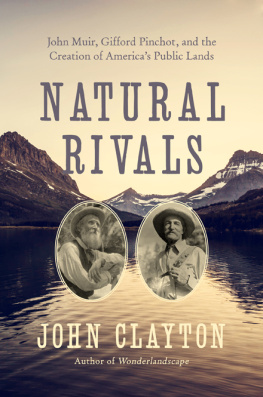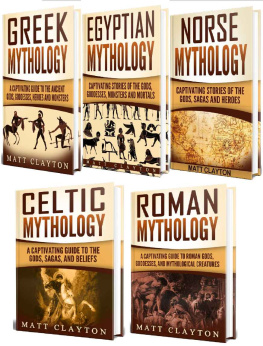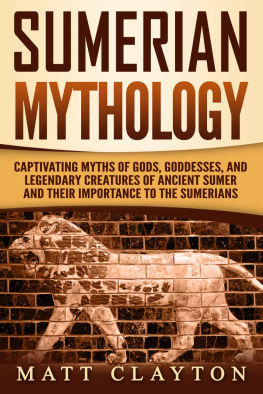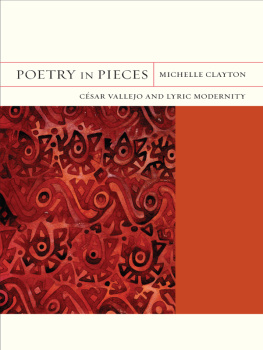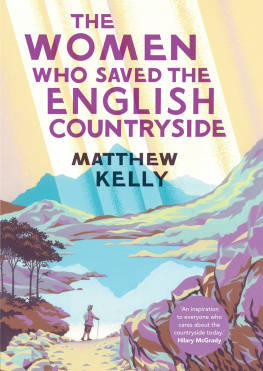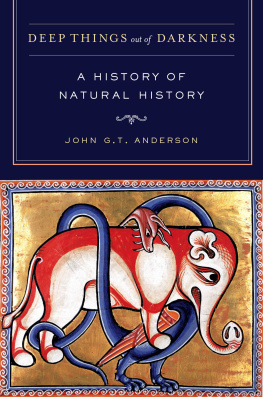Clayton - Natural Rivals
Here you can read online Clayton - Natural Rivals full text of the book (entire story) in english for free. Download pdf and epub, get meaning, cover and reviews about this ebook. City: New York, year: 2019, publisher: Pegasus Books, genre: Detective and thriller. Description of the work, (preface) as well as reviews are available. Best literature library LitArk.com created for fans of good reading and offers a wide selection of genres:
Romance novel
Science fiction
Adventure
Detective
Science
History
Home and family
Prose
Art
Politics
Computer
Non-fiction
Religion
Business
Children
Humor
Choose a favorite category and find really read worthwhile books. Enjoy immersion in the world of imagination, feel the emotions of the characters or learn something new for yourself, make an fascinating discovery.
- Book:Natural Rivals
- Author:
- Publisher:Pegasus Books
- Genre:
- Year:2019
- City:New York
- Rating:3 / 5
- Favourites:Add to favourites
- Your mark:
- 60
- 1
- 2
- 3
- 4
- 5
Natural Rivals: summary, description and annotation
We offer to read an annotation, description, summary or preface (depends on what the author of the book "Natural Rivals" wrote himself). If you haven't found the necessary information about the book — write in the comments, we will try to find it.
Clayton: author's other books
Who wrote Natural Rivals? Find out the surname, the name of the author of the book and a list of all author's works by series.
Natural Rivals — read online for free the complete book (whole text) full work
Below is the text of the book, divided by pages. System saving the place of the last page read, allows you to conveniently read the book "Natural Rivals" online for free, without having to search again every time where you left off. Put a bookmark, and you can go to the page where you finished reading at any time.
Font size:
Interval:
Bookmark:

NATURAL RIVALS
NATURAL
RIVALS
John Muir, Gifford Pinchot, and the
Creation of Americas Public Lands
JOHN CLAYTON

PEGASUS BOOKS
NEW YORK LONDON
To Charlie Chasmo Mitchell,
teacher, scholar, inspirer, friend

On the 189697 National Forest Commission:
John Muir (18381914), (nonvoting) naturalist, wanderer, writer, activist, evangelist. Defender of Yosemite National Park, cofounder of the Sierra Club.
Gifford Pinchot (18651946), (secretary) forester, politician, administrator. Founder of the U.S. Forest Service, advisor to Theodore Roosevelt.
Charles Sargent (18411927), (chair) horticulturalist, botanist, head of Harvards Arnold Arboretum. Friend of Muir, mentor to Pinchot.
Arnold Hague (18401917), geologist, Yellowstone expert. Imagine John Muir crossed with a Washington, D.C., insider. Ally of Pinchot.
William Brewer (18281910), botanist, proto-forester, taught Pinchot at Yale.
Henry Abbot (18311927), civil engineer, streamflow and reservoir expert, ally of Sargent.
Alexander Agassiz (18351910), zoologist. Did not participate.
O. Wolcott Gibbs (18221908) (ex officio), chemist. President of the National Academy of Sciences.
Magazine editors:
Robert Underwood Johnson (18531937), associate editor of The Century. Muirs close friend and political collaborator.
William Stiles (18371897), editor of Garden and Forest. Charles Sargent owned the magazine, but Stiles was chief writer and lobbyist.
George Bird Grinnell (18491938), editor of Forest and Stream. Aristocratic hunter-conservationist and friend of Theodore Roosevelt.
Supporting players:
Frederick Law Olmsted (18221903), landscape architect, park planner, mentor to Pinchot.
Bernhard Fernow (18511923), forester, Pinchots predecessor as chief government forester.
William Kent, (18641928), philanthropist, congressman, donor of Muir Woods National Monument.
William Holman (18221897), Indiana congressman. Rural cheapskate and anti-monopolist.
Relevant U.S. presidents:
Benjamin Harrison (R), in office 188993. Created first Forest Reserves.
Grover Cleveland (D), 189397. Convened the National Forest Commission.
William McKinley (R), 18971901. Little interested in the natural world.
Theodore Roosevelt (R), 190109. Nature lover with charismatic personality.
William Taft (R), 190913. More timid than Roosevelt but charged with carrying on his legacy.
Woodrow Wilson (D), 191321. Little interested in the natural world.

Before Muir and Pinchot meet:
| 1838: John Muir is born | 1864: Yosemite Valley: California state park | 1865: Gifford Pinchot is born |
| 1868: Muir arrives in the Sierra | 1872: Yellowstone: national park | |
| 1880: Muir marries Louie Strentzel | 1889: Pinchot graduates Yale | |
| 1889: Muir and R.U. Johnson in Yosemite | 1890: Yosemite, Sequoia, and General Grant: national parks | |
| 1891: Forest Reserve Act (Section 24) | 189193: Pinchot at Biltmore | |
| 1892: Muir organizes Sierra Club | 189394: PinchotLaura Houghteling romance |
Muir-Pinchot collaboration (climax of this book):
1893: Pinchot and Muir first meet in New York
| 1895: Century symposium, A Plan to Save the Forests |
| 1896: National Forest Commission trip |
| February 1897: Washingtons Birthday Reserves |
| March 1897: Civil Sundry Appropriations Bill |
| June 1897: Forest Management Act (Pettigrew amendment) |
| 189798: Muirs Harpers and Atlantic articles |
| June 1897: Pinchot offered federal job |
Later events:
| 1898: Pinchot becomes chief forester |
| 1901: Roosevelt becomes president |
| 1903: Muir and Roosevelt in Yosemite |
| 1905: Pinchot founds U.S. Forest Service |
| 1906: Yosemite Valley added to national park |
| 1907: Muir and Pinchot at Sierra Club board meeting |
| 1910: Pinchot is fired |
| 1913: Hetch Hetchy dam is approved |
| 1914: Muir dies |
| 1946: Pinchot dies |

O n a springtime drive from my home near Yellowstone to Glacier National Park, I tumbled across rolling green foothills and then crested a snowcapped mountain pass where evergreens blanketed bustling creeks. As my eight-hour route spooled along rural two-lane roads, I enjoyed changing patterns of landscape: varied geology of mountains and plains, varied ecology of woodlands and grasslands, and varied land use of ranches and small towns. Behind those patterns, visible only on specialized maps, was the fact that some of this land was privately owned and some was public.
My house looks out on public land managed by the U.S. Forest Service. Glacier is public land managed by the National Park Service. Between the two, I drove through lots of public land administered by the federal Bureau of Land Management.
When I was growing up in Massachusetts, most public lands were recreational destinations, such as a beach, a woodsy trail, a city park, or an athletic facility. In 1990, I moved to Montana, where public lands are both ubiquitous and multifunctional. In addition to recreational destinations such as Yellowstone and Glacier, Montana has public lands managed for a variety of purposes by the Forest Service and Bureau of Land Management. Indeed these multiple-use agencies seek to balance logging, grazing, habitat, recreation, and other useson acreages twenty times greater than that of the Park Service.
Managing public lands is thus complicated. Each interest group pursues a different deep-rooted passion, but furthermore each stretch of land boasts different characteristics. Matching everything up is like putting together a jigsaw puzzleexcept that ongoing political developments keep changing the sizes of the pieces. Furthermore, although assembling a jigsaw puzzle is a fun family activity that merges interests to assemble a beautiful vision, on public lands the puzzle-work is a tedious prerequisite for peoples true interests, which are the activities that take place on the land.
My drive to Glacier in the spring of 2017 followed a series of controversies suggesting that the nationwide public-lands jigsaw might get entirely swept off its table. The reigning Republican party platform called for federal lands to be returned to states. Congress changed accounting rules to make such land transfers easier. The administration of President Donald
I had trouble with both sides of the debate. The arguments for federal land transfer relied on nave fantasies in which well-paying rural jobs would magically appear and litigation would magically vanish, despite everything we know about our economic and legal systems. Meanwhile, many defenders of public lands ridiculously overstated the bogeyman, acting as if Americas crown jewels were already on the chopping block.
Next pageFont size:
Interval:
Bookmark:
Similar books «Natural Rivals»
Look at similar books to Natural Rivals. We have selected literature similar in name and meaning in the hope of providing readers with more options to find new, interesting, not yet read works.
Discussion, reviews of the book Natural Rivals and just readers' own opinions. Leave your comments, write what you think about the work, its meaning or the main characters. Specify what exactly you liked and what you didn't like, and why you think so.

